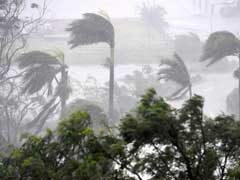Dhaka, May 30: Cyclone Mora made landfall in Bangladesh on Tuesday damaging several houses and packing winds of up to 117 kilometres per hour after authorities evacuated hundreds of thousands of people from the coastal areas.
In a special bulletin, Bangladesh Meteorological Department said the severe cyclonic storm Mora moved northwards over North Bay and started crossing the Cox's Bazar-Chittagong coast at 6 am (local time).
It is likely to move in a northerly direction further, the bulletin said.
Under its influence, gusty or squally wind with rain or thunder showers were continuing over North Bay, and the coastal districts and maritime ports of Bangladesh, The Daily Star reported.
Maximum sustained wind speed within 64 km of the cyclone centre was about 89 kmph rising to 117 kmph in gusts or squalls, the report said.
As many as 3,00,000 people had been taken to shelters in more than ten districts most vulnerable to the cyclone, Additional Secretary Golam Mostafa, a spokesman for the disaster management ministry's control room, was quoted as saying by BD News.
"The people were moved out to at least 400 cyclone shelters or safer places like schools and government offices in the coastal areas," a disaster management ministry spokesman said.
At least 2.5 million people in ten districts risk falling in the way of the severe cyclonic storm.
The districts at risk were Cox's Bazar, Chittagong, Noakhali, Lakshmipur, Feni, Chandpur, Barguna, Patuakhali, Bhola, Barisal and Pirojpur.
Under the influence of the cyclonic storm, the low-lying areas of the coastal districts and their offshore islands were likely to be inundated by storm surge of 4-5 feet height above the normal astronomical tide, the Met office said.
All fishing boats and trawlers over North Bay and deep sea have been advised to remain in shelter till further notice.
The Met office had issued the highest level of warning signal in a scale of 10 for two maritime ports after Mora developed into a severe cyclonic storm.
Habibur Rahman, a member of Saint Martin's Island Union Parishad, told Bangla daily Prothom Alo that several houses were damaged in Saint Martin's Island in the morning.
Bangladesh is often hit by bad storms between April and December that cause deaths and widespread destruction.
Cyclone Roanu hit the southern coast of Bangladesh in 2016, leaving 20 people dead and forcing half a million to flee their homes.
The cyclone formed after heavy rains in Sri Lanka caused floods and landslides, killing 180 people.





Comments
Add new comment